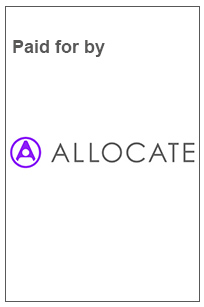Five most common myths about temporary staffing
Myth #1: ‘Internal NHS banks won’t fill the majority of our unfilled duties’
Based on the data we see from our customer’s solutions, this is not the case.
On average our 200+ customers process 2.4 million temporary staffing shifts using our bank solutions each month. The vast majority of these are filled by the internal bank with the remainder (around 500,000) being sent to agency.
While we believe the ‘gold standard’ is to have a blended temporary workforce approach to provide you extra lines of defence through shared banks and partnered agencies, your internal bank will always offer you the highest fill rates, best continuity of care at a lower cost and greater control.
Myth #2: ‘Internal NHS banks require a lot of admin to run’
Not as much as you would have thought! Once you have the technology in place, you’ll notice a significant reduction in the amount of admin your bank office and centralised or devolved teams have to complete. Software that links to your rotas, rosters and electronic staff record will provide a complete view of your staff and make it easier to share and automate data to avoid duplications for shift booking and payroll.
It can also empower your staff by providing direct booking options along with managing availability and working preferences – all freeing up time previously spent on booking admin in addition to providing a positive work/life balance for your staff.
E-rostering team, Medway NHS Foundation Trust: ‘The introduction of BankStaff+ has eliminated the need for paper timesheets from temporary staff. Previously the rostering team used to receive 300-400 paper timesheets per week to process manually. These timesheets are now all added to eRostering and extracted electronically.’
Myth #3: ‘Direct engagement is a risky solution’
I think the main reason why people choose not to launch a direct engagement solution is due to past stories regarding tax evasion and special employment schemes that have not been HMRC compliant.
For this reason, it’s key to invest in a solution that is compliant with HMRC, that way you’ll have the assurance that it’s within regulations at every stage of the process. John Simon, head of temporary staffing, Barts Health NHS Trust: ‘HMRC came to visit the trust for a review of our process in 2019. We took the team through all the processes, the 247Time DirectEngage system, data and insights, including everything around IR35. HMRC stated that it was ‘well assured that Barts Health NHS Trust was compliant’. HMRC also requested a copy of our processes to share as best practice, as it found them to be incredibly robust.’
Myth #4: ‘A collaborative bank may mean I lose my bank workers to a neighbouring trust/organisation’
Collaborative banks (aka shared banks), facilitate the sharing of staff with neighbouring trusts or organisations, but in a controlled way.
You choose when duties are cascaded to the collaborative which allows your organisation to share a pool of existing registered staff. As such, there’s no need for the bank workers to register with an external provider or agency to pick up these shifts.
As for your staff – well, as advised in the People plan, you’ll be creating flexible working opportunities, which may fit better with their lifestyle or wellbeing, meaning you’re more likely to retain your people. You can also apply learnings and best practice that are gained from experience at surrounding trusts and organisations.
All of the above is delivered through CloudStaff with additional safety measures seen through the integration of HealthRoster – Working Time Directive (WTD) rules helping to safeguard breaches or unsafe working practices. Participating trusts also sign up to a memorandum of understanding to ensure an agreed best practice approach is applied around resource sharing.
Myth #5: ‘A collaborative bank will mean we have to align pay rates across the region’
This is entirely up to the collaborative, but organisations can choose to maintain local pay rates that reflect the unique needs and circumstances of each organisation.
To add to that, trusts can feel assured knowing that only staff with the right skills, availability and experience will be able to book duties.
Former head of temporary staffing strategy, the Department of Health and Social Care: ‘Collaboration is essential if we’re to make the NHS the best it can be for patients and the workforce. We have seen that collaboration on temporary staffing can, in particular:
• pave the way for the harmonisation of pay rates and give trusts collective bargaining power when dealing with agencies;
• can greatly increase the pool of staff able to fill any given temporary shift, and thereby increase opportunities for those who choose to work flexibly; and
• can break down barriers, such as incompatible pre-employment checks and mandatory training, that currently makes the movement of staff between trusts so burdensome.’
Would you agree with our myths?
Have you heard any of these myths yourself? Maybe you’ve been part of the conversation or have been dissuaded from exploring workforce support or technology.
Let us know what you think and whether you agree or disagree with our temporary staffing myth busters. Email us at [email protected] and share your views.
Related content
We are excited to bring you a fun packed Eastern Branch Conference in 2025 over three days.
This event is for those that will benefit from an overview of costing in the NHS or those new to costing and will cover why we cost and the processes.